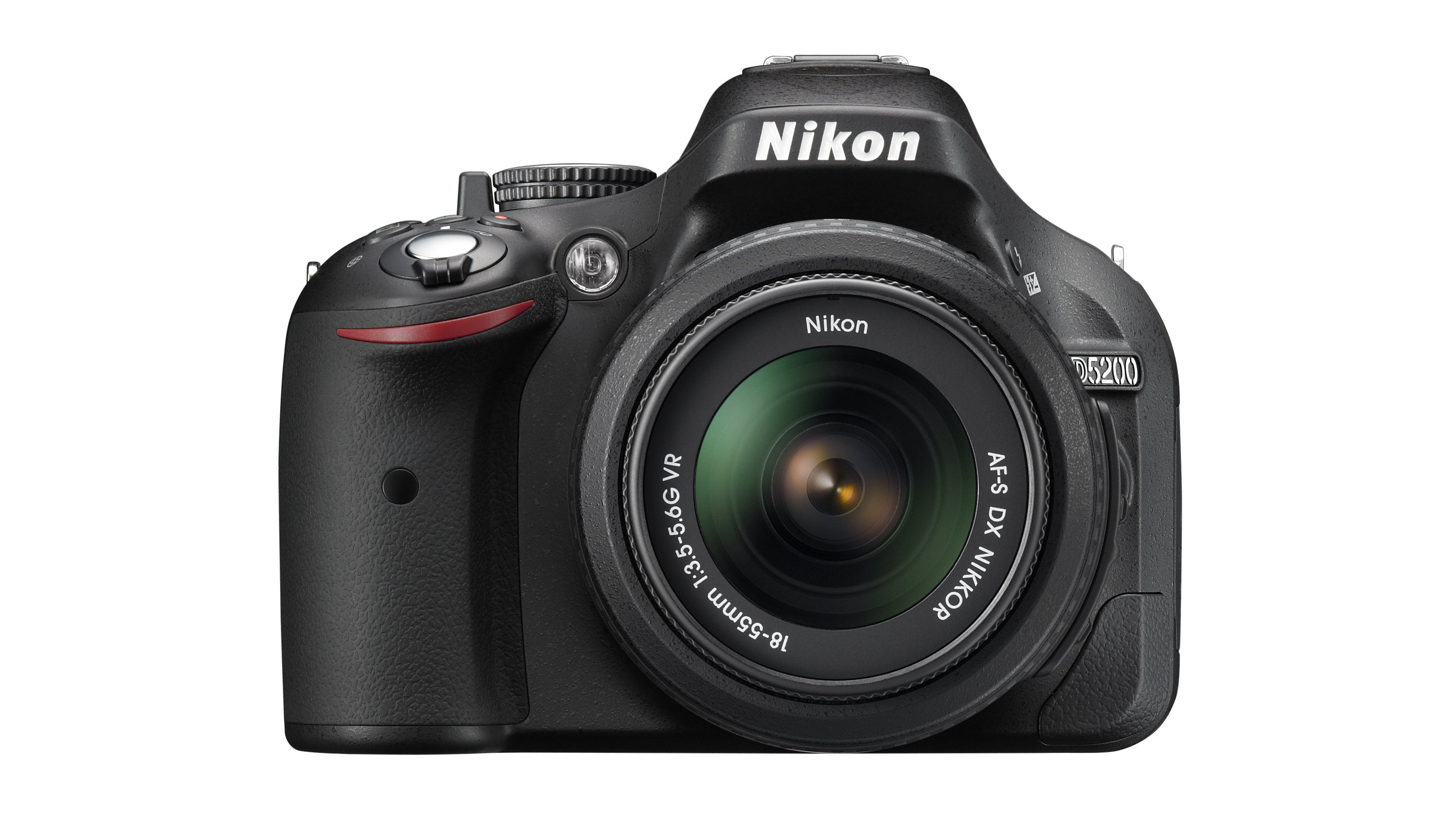Why you can trust TechRadar
We shoot a specially designed chart in carefully controlled conditions and the resulting images are analysed using DXO Analyzer software to generate the data to produce the graphs below.
A high signal to noise ratio (SNR) indicates a cleaner and better quality image.
For more more details on how to interpret our test data, check out our full explanation of our noise and dynamic range tests.
Here we compare the Nikon D5200 with the Pentax K-30, Nikon D5100, Canon EOS 650D and Nikon D7000.
JPEG signal to noise ratio
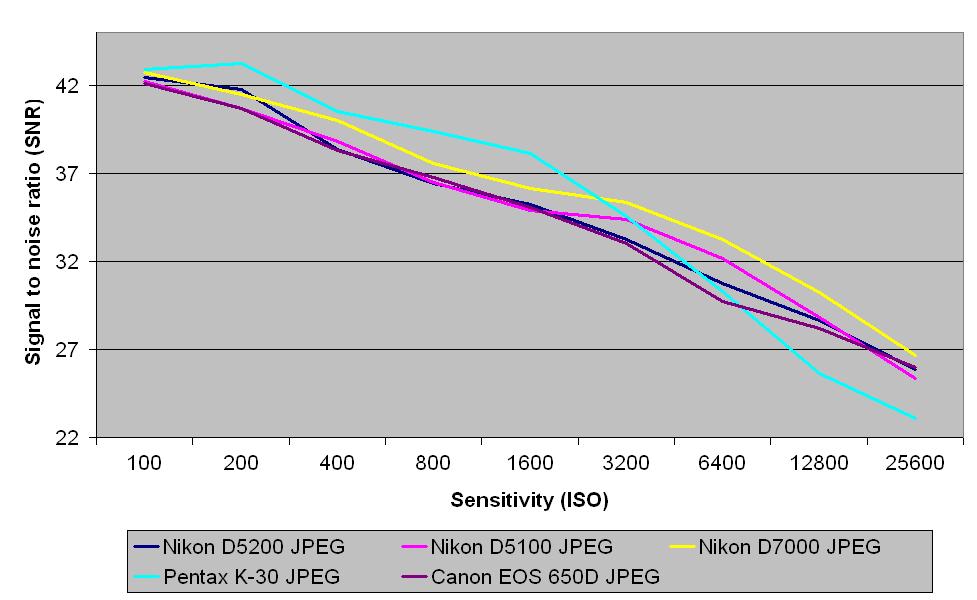
These results show that the Nikon D5200 produces a similar signal to noise ratio in its JPEG images to the Nikon D5100 and Canon EOS 650D, but a weaker ratio than the Nikon D7000 at most sensitivity settings. At lower ISOs, the D5200's JPEGs have a weaker signal to noise ratio than the Pentax K-30, but at ISO 6400 and above, the Nikon takes the lead.
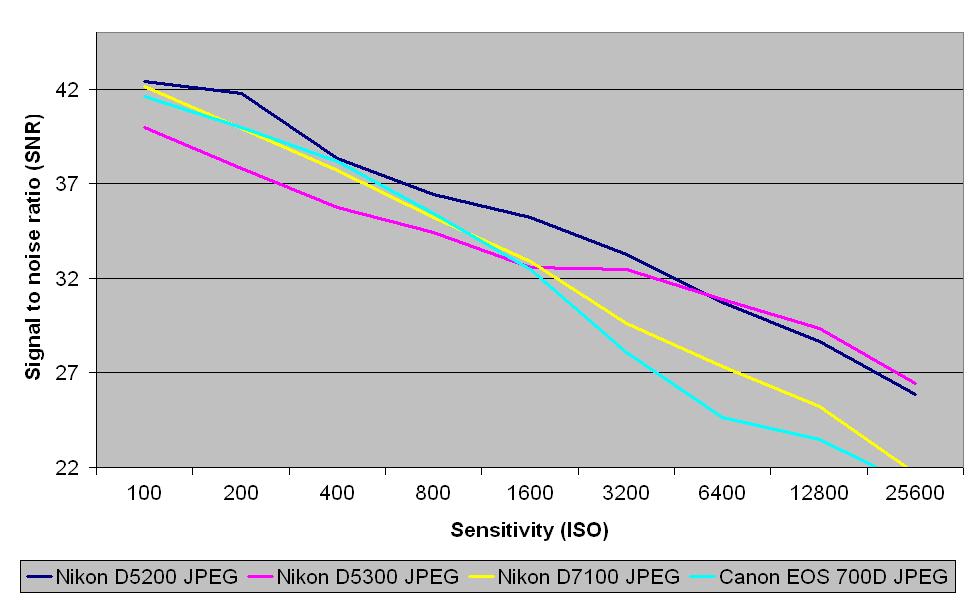
As you can see the Nikon D5200 beats all these competing cameras, including the Nikon D7100 and Canon 700D, apart from the Nikon D5300 at the higher sensitivity settings. In theory this means that the camera produces cleaner images, but the banding seen in images taken at ISO 3200 and higher is likely to be more problematic.
Raw signal to noise ratio
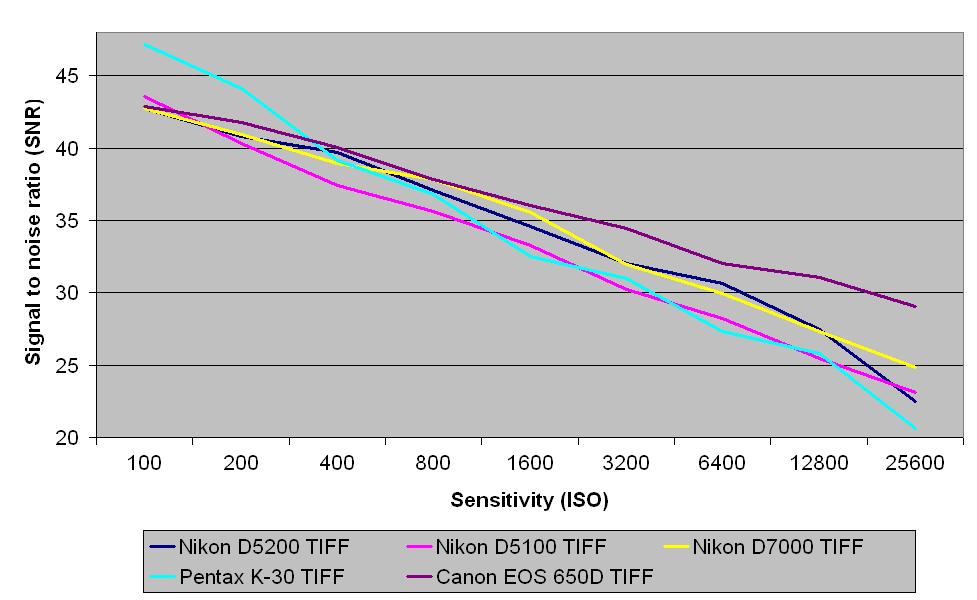
The signal to noise ratios of the TIFF images (after conversion from raw) from the Nikon D5200 are slightly stronger than its JPEG images, sitting above the Nikon D5100 at most sensitivities, and above the Nikon D7000 at ISO 400 and ISO 3200-12800. It also beats the Pentax K-30 at ISO 400 and above. The Canon EOS 650D beats the D5200 at every sensitivity.
Sign up for breaking news, reviews, opinion, top tech deals, and more.
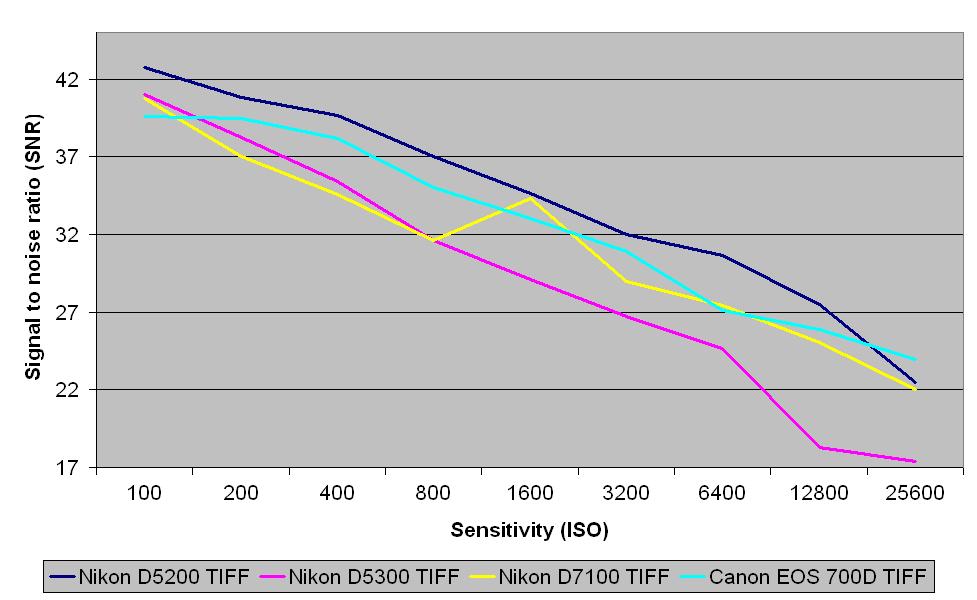
Just like the JPEG files, the D5200's raw files (after conversion to TIFF) beat the Nikon D7100, Canon 700D and Nikon D5300 for the vast majority of its sensitivity range. However, banding is an issue at high sensitivities and the D5300 and D7100 have better detail resolution.
JPEG dynamic range
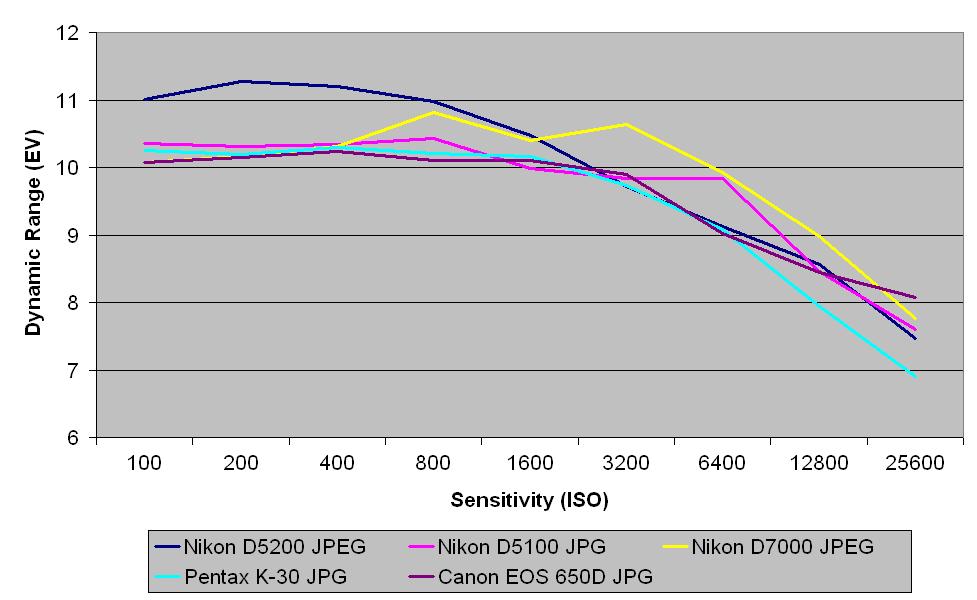
Results for dynamic range are competitively stronger than those for signal to noise ratio, with the Nikon D5200's JPEG images showing the greatest dynamic range at lower ISOs, before slipping below the Nikon D7000 at ISO 1600 and above, and then dropping off more at ISO 3200 and above, where it also falls slightly below the Nikon D5100 and roughly level with the Canon EOS 650D. It stays roughly level with thePentax K-30 at ISO 3200-6400, before beating it at ISO 12800 and above.
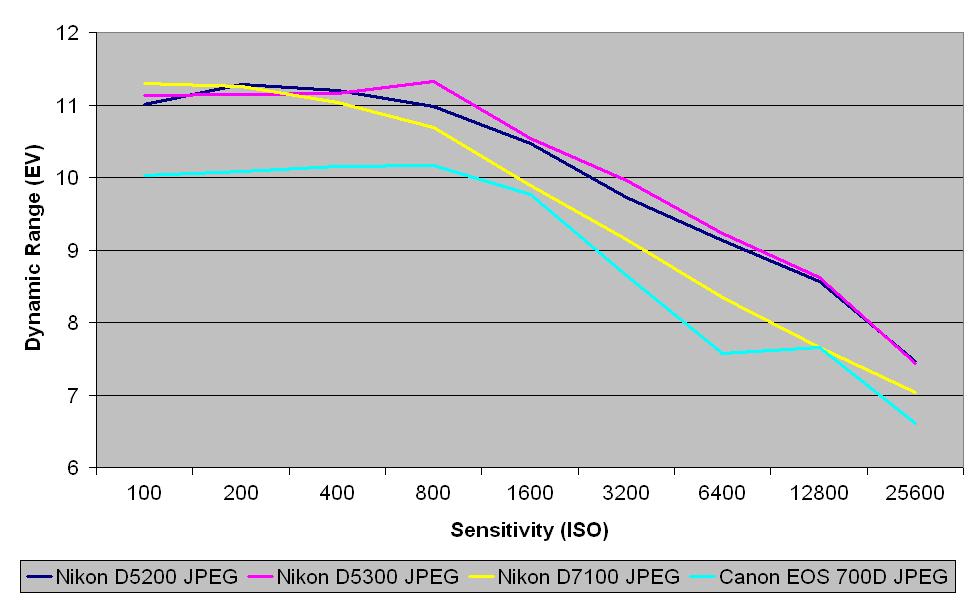
The D5200 impresses here proving it is capable of recording a wide range of tones in a single image. While the Canon 700D's dynamic range may look poor in comparison with that of the Nikon D5200, Nikon D7100 and Nikon D5300, it produces images with a pleasant level of contrast that look great straight from the camera.
Raw dynamic range
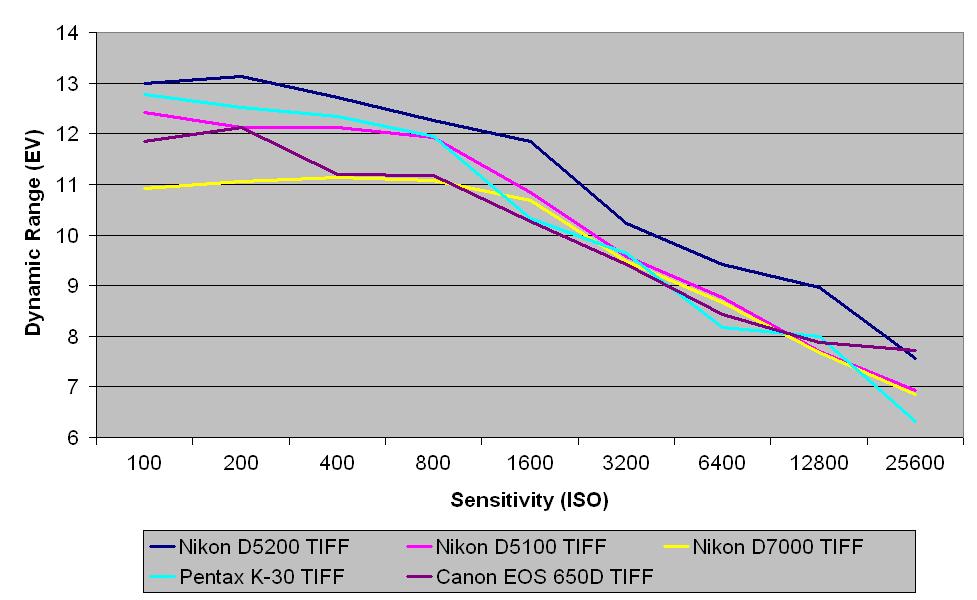
Dynamic range in TIFF images (after conversion from raw) from the Nikon D5200 are very impressive, beating the Pentax K-30, Nikon D5100, Canon EOS 650D and Nikon D7000 throughout the sensitivity range, except at ISO 25600 where it drops ever so slightly behind the Canon.
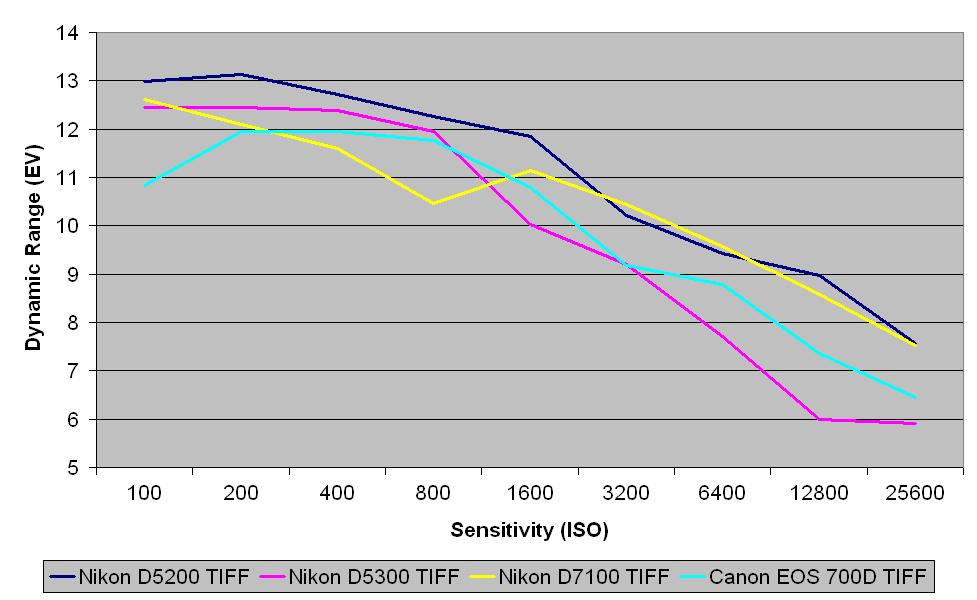
The D5200 competes well with the other cameras for raw (after conversion to TIFF) dynamic range.
Current page: Noise and dynamic range
Prev Page Image quality and resolution Next Page Sample images